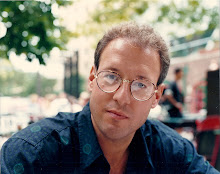But in this is the point that the two competitors target audiences based on "cost-of-entry" parameters. Things taken for granted by the majority. An adult with no children would feel uncomfortable working with our orthodontist. A child would feel uncomfortable being treated in a room surrounded by 55 year old adults.
So how would orthodontists better differentiate themselves within their respective audiences? Orthodontists targeting children and orthodontists targeting adults better differentiate themselves by identifying a "reason-for-being" within their sphere to which patients better relate. In the same way both Folgers and Maxwell House "deliver" flavor and aroma both cannot occupy the same "mental space."
To set themselves apart Maxwell House stays the course with various forms of "Good to the last drop" messaging. What's good to the last drop? The coffee. What about the coffee's good to the last drop? The flavor and aroma. What could be finer than that?
Mrs Olsen! She said drink "Mountain Grown" Folgers. Mountain grown was supposed to be the support point to the contention or unique selling proposition that Folgers was "the richest kind." The richest kind of what? The richest kind of coffee. What about the coffee was "the richest kind?" The flavor and aroma. So you see, we have two products not doing a very good job differentiating themselves. Both focus on a "sensory" parameter category consumers generally take for granted.
How'd one get off the treadmill? By focusing on another and more consumer-relevant "reason-for-being." By focusing on "stimulation" rather than "flavor" and "aroma" Folgers became "the best part of waking up is Folgers [or caffiene] in your cup?
What happened? A $300 million Folgers business became a $1.6 product.
So what's your "reason-for-being" versus your competitors. And is it that good?
That's thinking outside of the box :)











